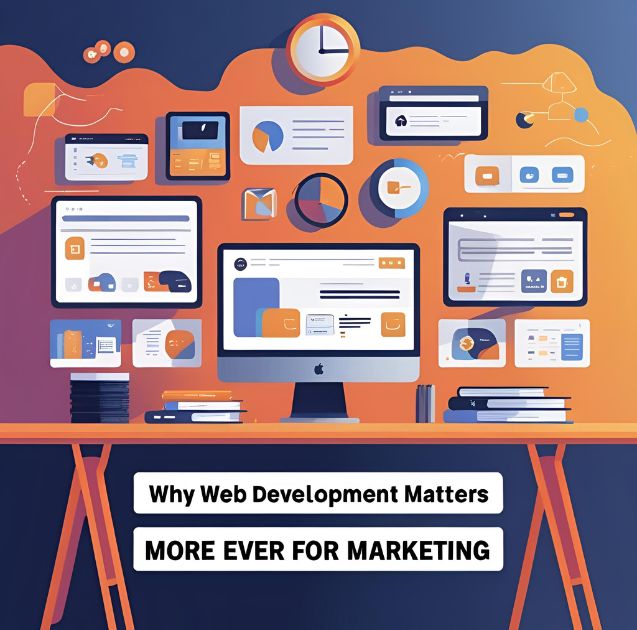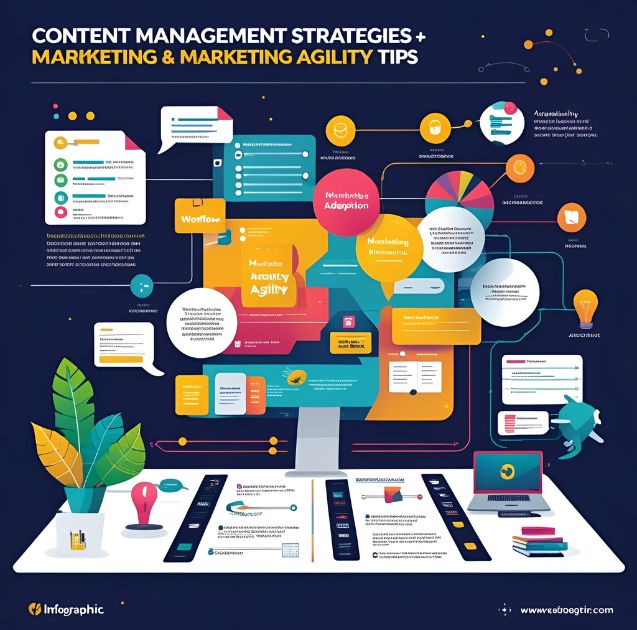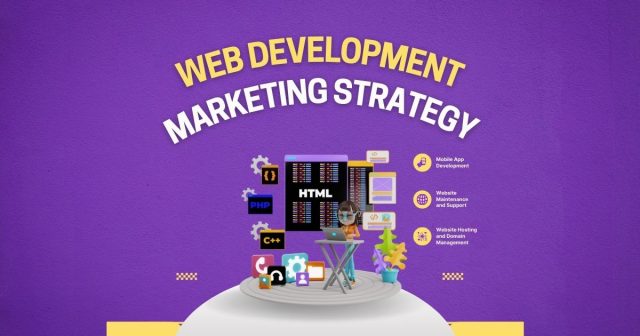Most businesses treat web development and marketing as separate entities. Development teams build websites, while marketing teams drive traffic and generate leads. But this siloed approach misses a crucial opportunity: when web development and marketing strategy work together, they create a powerful synergy that can transform your business results.
Your website isn’t just a digital brochure—it’s your most important marketing asset. The way it’s built, designed, and optimized directly impacts every marketing campaign you run. From search engine rankings to conversion rates, web development decisions shape your marketing success in ways that many business owners never realize.
This post explores how strategic web development can amplify your marketing efforts, boost your ROI, and create a competitive advantage that’s difficult for competitors to replicate.
Why Web Development Matters More Than Ever for Marketing

Modern marketing depends on digital touchpoints. Whether customers discover you through social media, search engines, or paid advertising, they’ll eventually land on your website. That moment—when a potential customer first interacts with your site—determines whether your marketing investment pays off.
Research shows that 88% of online consumers are less likely to return to a website after a bad experience. This means that no matter how brilliant your marketing campaigns are, poor web development can undermine everything you’ve worked to achieve.
Web development affects three critical marketing metrics:
User Experience (UX): How easily visitors can navigate your site and complete desired actions
Search Engine Optimization (SEO): How well search engines can crawl, index, and rank your pages
Conversion Rate Optimization (CRO): How effectively your site turns visitors into customers
When developers understand these marketing priorities, they can make technical decisions that support your broader business goals.
The Technical Foundation of Marketing Success
Site Speed and Performance
Site speed isn’t just a technical concern—it’s a marketing imperative. Google uses page speed as a ranking factor, and slow-loading pages directly impact your search visibility. More importantly, visitors expect fast experiences. A one-second delay in page load time can reduce conversions by 7%.
Web developers can optimize performance through:
- Image compression and lazy loading
- Minifying CSS and JavaScript files
- Implementing content delivery networks (CDNs)
- Choosing fast, reliable hosting solutions
Mobile Responsiveness
With over 50% of web traffic coming from mobile devices, responsive design is non-negotiable. But mobile optimization goes beyond making your site look good on phones. It affects everything from local search rankings to social media engagement.
Developers should prioritize:
- Touch-friendly navigation and buttons
- Readable text without zooming
- Fast loading on slower mobile connections
- Streamlined checkout processes for mobile users
Search Engine Optimization Architecture
SEO isn’t something you add to a website after it’s built—it needs to be woven into the development process from day one. Technical SEO elements include:
- Clean, crawlable URL structures
- Proper heading hierarchy (H1, H2, H3 tags)
- Schema markup for rich snippets
- XML sitemaps and robots.txt files
- Fast, secure hosting with SSL certificates
Conversion-Focused Development Strategies
Strategic User Flow Design
Every page on your website should guide visitors toward a specific action. Web developers can support marketing goals by creating clear user flows that eliminate friction and confusion.
This involves:
- Placing calls-to-action (CTAs) in high-visibility locations
- Reducing the number of steps in conversion processes
- Creating logical navigation paths
- Designing forms that are easy to complete
A/B Testing Infrastructure
Marketing teams need the ability to test different approaches quickly. Developers can build this flexibility into the site architecture, making it easy to test headlines, button colors, page layouts, and other elements that impact conversions.
Analytics and Tracking Implementation
Data drives marketing decisions. Developers should implement comprehensive tracking from launch, including:
- Google Analytics for traffic and behavior analysis
- Heat mapping tools to understand user interactions
- Conversion tracking for marketing campaigns
- Customer journey mapping across touchpoints
Content Management and Marketing Agility

Flexible Content Systems
Marketing moves fast. Campaign messages change, new products launch, and market conditions shift. Your website’s content management system should allow marketing teams to make updates quickly without requiring developer intervention.
Key features include:
- Intuitive content editing interfaces
- Template systems for consistent branding
- Image optimization tools
- SEO-friendly content creation workflows
Integration Capabilities
Modern marketing uses multiple tools and platforms. Your website should integrate seamlessly with:
- Email marketing platforms
- Customer relationship management (CRM) systems
- Social media management tools
- Marketing automation software
- Analytics and reporting platforms
The ROI of Marketing-Focused Web Development
Investing in marketing-focused web development pays dividends across multiple areas:
Improved Search Rankings: Technical SEO improvements can increase organic traffic by 20-50% within six months.
Higher Conversion Rates: UX improvements typically increase conversion rates by 10-15%.
Reduced Marketing Costs: When your website converts better, you need less traffic to achieve the same results, reducing advertising spend.
Faster Campaign Execution: Flexible systems allow marketing teams to launch campaigns quickly and test new approaches.
Better Customer Insights: Proper tracking and analytics provide data that improves future marketing decisions.
Building a Collaborative Development Process
Success requires breaking down silos between development and marketing teams. Start by:
- Including marketers in development planning: Marketing input during the planning phase prevents expensive changes later.
- Setting shared KPIs: Both teams should be measured on business outcomes like leads, conversions, and revenue.
- Regular performance reviews: Monthly analysis of website performance should include both technical and marketing metrics.
- Continuous optimization: Treat your website as a living asset that requires ongoing improvement.
Future-Proofing Your Marketing Technology Stack
Technology evolves rapidly. Your web development approach should anticipate future marketing needs:
- API-first development allows integration with new marketing tools
- Headless CMS architectures provide flexibility for multi-channel marketing
- Progressive web apps improve mobile experiences and engagement
- AI and personalization capabilities enable more targeted marketing
Your Next Steps to Marketing-Driven Development
Web development and marketing strategy aren’t separate functions—they’re two sides of the same coin. When your website is built with marketing goals in mind, every technical decision becomes a strategic advantage.
Start by auditing your current website through a marketing lens. How fast does it load? How easily can visitors complete desired actions? How well does it support your SEO efforts? The answers will reveal opportunities to align your development and marketing efforts.
Remember: your website is your most important marketing asset. Invest in building it right, and it will amplify every other marketing effort you make.







